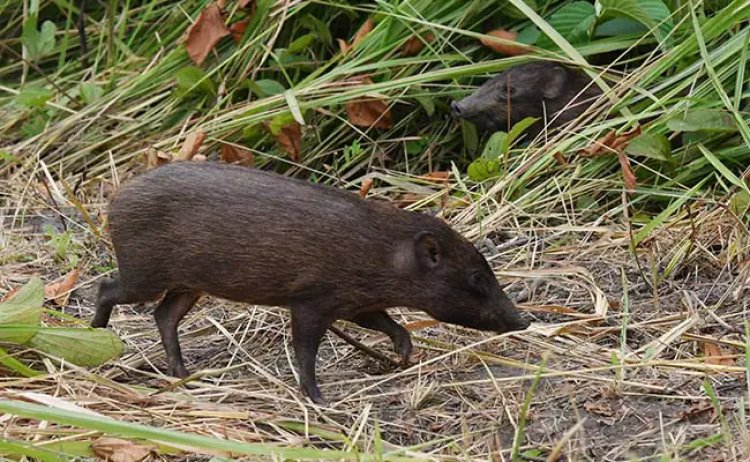Ten pygmy hogs released in Manas National Park

Guwahati: Ten captive-bred pygmy hogs, the world's smallest and rarest wild pigs, have been released in Manas National Park of Assam.
Found only in tall dense alluvial grasslands, pygmy hogs are incredibly shy.
This is the third instance that pygmy hogs have successfully been introduced in the National Park, a release issued by biodiversity conservation group 'Aarayank', a key partner of the programme, said on Friday.
Fourteen pygmy hogs were released in Manas National Park in 2020 and 12 in 2021.
The pygmy hog's coat is brown with a few dark hairs. Its head is tapered with a slight crest of hair on the forehead and the back of its neck.
The animals were released by the Pygmy Hog Conservation Programme (PHCP), taking the total number of such mammals released in the Park so far to 36.
The pygmy hogs were released on Friday and Wednesday in Rupahi grasslands in the Bhuyanpara range of the Park.
The PHCP plans to release 60 pygmy hogs in Manas National Park by 2025.
With this, the number of pygmy hogs reintroduced into the wild by the PHCP has reached 152 since 1996.
Six pygmy hogs were captured from the Bansbari range of Manas National Park in 1996 to start the breeding programme. The reintroduction of captive hogs in the wild began in 2008.
Initially, three protected areas in Assam were selected for better protection and restoration of alluvial grasslands, and over the next decade, 35 hogs were released in Sonai-Rupai Wildlife Sanctuary, 59 in Orang National Park, and 22 in Barnadi Wildlife Sanctuary.
Manas Field Director Dr. Vaibhav Chandra Mathur said that pygmy hog (Porcula salvania) has been recovered from the verge of extinction in the wild.
' Manas Tiger Reserve serves as the source stock of hogs for the Pygmy Hog Conservation Programme, and this tranche of supplementation with a captive-bred population is going to strengthen conservation efforts, especially for tall wet grasslands, for which the pygmy hog serves as an indicator species', Mathur said.
In 1995, Durrell Wildlife Conservation Trust of the UK partnered with the Assam government's forest department, the Wild Pig Specialist Group of International Union for Conservation of Nature (IUCN), and the Union Ministry of Environment, Forest and Climate changes to form the Pygmy Hog Conservation Programme (PHCP).
Currently, the project is being implemented by NGOs Aarayank and EcoSystems Ind.
Aaranyak's Chief Executive Officer Dr. Bibhab Kumar Talukdar said that conservation of lesser-known species such as Pygmy Hog, Bengal Florican, and Hispid Hare and other grassland obligatory species is equally important as protecting animals such as Tiger and One-Horned Rhinoceros.
Durrell Wildlife Conservation Trust's CEO Dr. Lesley Dickie, who came to Assam to take part in the programme this year said, Durrell has been committed to conserving the tiny but precious pygmy hog, and their grassland home, for decades. With our partners, including the government, we strive to create a functioning habitat that also allows local communities to thrive'.















































